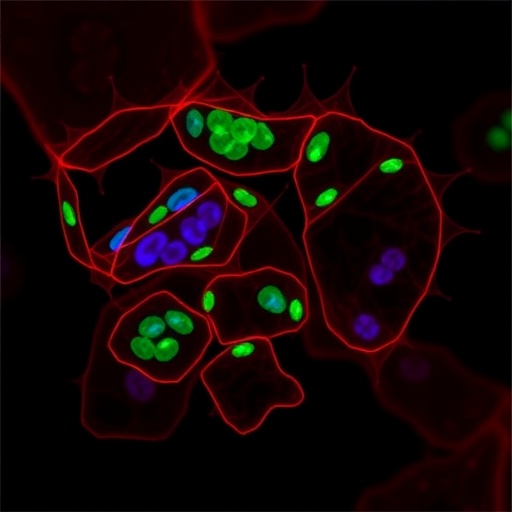Canadian and Brazilian researchers describe the use of 13 molecular tools for measuring different intracellular signaling pathways and evaluating the action mechanisms of new drugs
Canadian researchers, working in partnership with Brazilian colleagues, have developed 13 bioluminescence sensors for use in testing the effectiveness of new medical drugs in the laboratory.
The study, published in the journal Science Signaling, paves the way for new drugs to be tested and characterized. The biosensors are based on the action of G protein-coupled receptors (GPCRs), which are membrane-bound proteins involved in communication between cells.
The researchers did not choose to study GPCRs by chance. Between one-third and half of all drugs currently on the market are estimated to target these receptors.
“These proteins are targets of drugs used to treat a wide array of disorders and diseases, including allergy, pain, hypertension and diabetes, among others. The new biosensors are expected to be relevant to the discovery and development of new drugs for the treatment of even more diseases,” said Claudio Miguel da Costa-Neto, a professor in the Biochemistry and Immunology Department of the University of São Paulo’s Ribeirão Preto Medical School (FMRP-USP) in Brazil and one of the authors of the article.
Costa-Neto explained that until a few years ago, the in vitro tests used in new drug development – performed before clinical trials in animal models and humans – showed only whether the compound activated or blocked a given cellular response.
“To risk an analogy, until a few years ago these tests were performed as if there were a lamp that could be switched on or off,” he said. “We’ve recently found it possible to analyze the different pathways that can be activated by a receptor and to what extent a given signaling pathway is activated. So it’s no longer just a matter of an on or off switch. It’s as if we had a room with several LED lights or a dimmer, and could say how many pathways were activated, which ones, and above all how the pathways were activated or blocked. Our biosensors, and others that are being developed by other groups, provide a more complete answer, a signaling profile, as it were.”
The study describes how the researchers developed, validated and used a suite of bioluminescence resonance energy transfer (BRET) – based biosensors to measure the different intracellular signaling pathways and detect the action of pharmaceuticals in cultured cells. The signaling cascades resulting from interactions between GPCRs and their ligands (including hormones and neurotransmitters) control a wide array of processes in cells, making them key targets for new drug discovery.
The international team of researchers used genetic engineering and molecular biology techniques to add fluorescent and luminescent enzymes (such as luciferase, the light-producing substance found in glow-worms) to the GPCR ligands.
“When one of these receptors is activated by a drug and the protein inside the cell interacts with the receptor, light emitted by luciferase is transferred to the fluorescent protein and activates it. In this manner, we can accurately measure different levels of a drug’s action,” Costa-Neto said.
The study resulted from a broad partnership among researchers affiliated with FMRP-USP and Canada’s University of Montreal and McGill University. It was supported by FAPESP via a Thematic Project, a project selected in a call issued by São Paulo Researchers in International Collaboration (SPRINT), a research scholarship abroad awarded to postdoctoral researcher Larissa de Bortoli, and a doctoral scholarship awarded to Sarah Capelupe Simões, as well as the March 2018 São Paulo School of Advanced Science on Medicines: from Target to Market.
Validation
The 13 biosensors were tested on dozens of drugs and on several mutant receptors that simulated polymorphisms, some of which are associated with genetic diseases.
“To validate such important tools for the discovery of new drugs, the biosensors were tested on different ligands and mutant receptors. The goal was to show that it’s possible to detect a distinct signaling pattern not only when a different drug is used but also when the receptor is changed,” Costa-Neto said.
According to the researchers, the study represents an advance in the understanding of the refined signaling mechanism, owing to the number of biosensors developed and the technique used in the research.
“Mechanisms like these had already been described, but we significantly advanced our understanding of them. For this reason, we believe the new biosensors will have a major impact on new drug development,” Costa-Neto said.
“In addition to the importance of GPCRs as a target, another point is that the biosensors were extensively validated. We showed that they work, respond well and are highly reliable for the characterization of these signaling pathways.”
In addition to the precision of the tools they developed, Costa-Neto highlighted creativity as a key feature of the study. “Developing proteins with genetic engineering involves a great deal of knowledge and creativity,” he said. “Some of these biosensors are veritable ‘Frankensteins’, fabricated by splicing together various structural parts of different proteins. It was a highly creative study.”
###
About São Paulo Research Foundation (FAPESP)
The São Paulo Research Foundation (FAPESP) is a public institution with the mission of supporting scientific research in all fields of knowledge by awarding scholarships, fellowships and grants to investigators linked with higher education and research institutions in the State of São Paulo, Brazil. FAPESP is aware that the very best research can only be done by working with the best researchers internationally. Therefore, it has established partnerships with funding agencies, higher education, private companies, and research organizations in other countries known for the quality of their research and has been encouraging scientists funded by its grants to further develop their international collaboration. You can learn more about FAPESP at http://www.
Media Contact
Joao Carlos Silva
[email protected]
http://dx.




